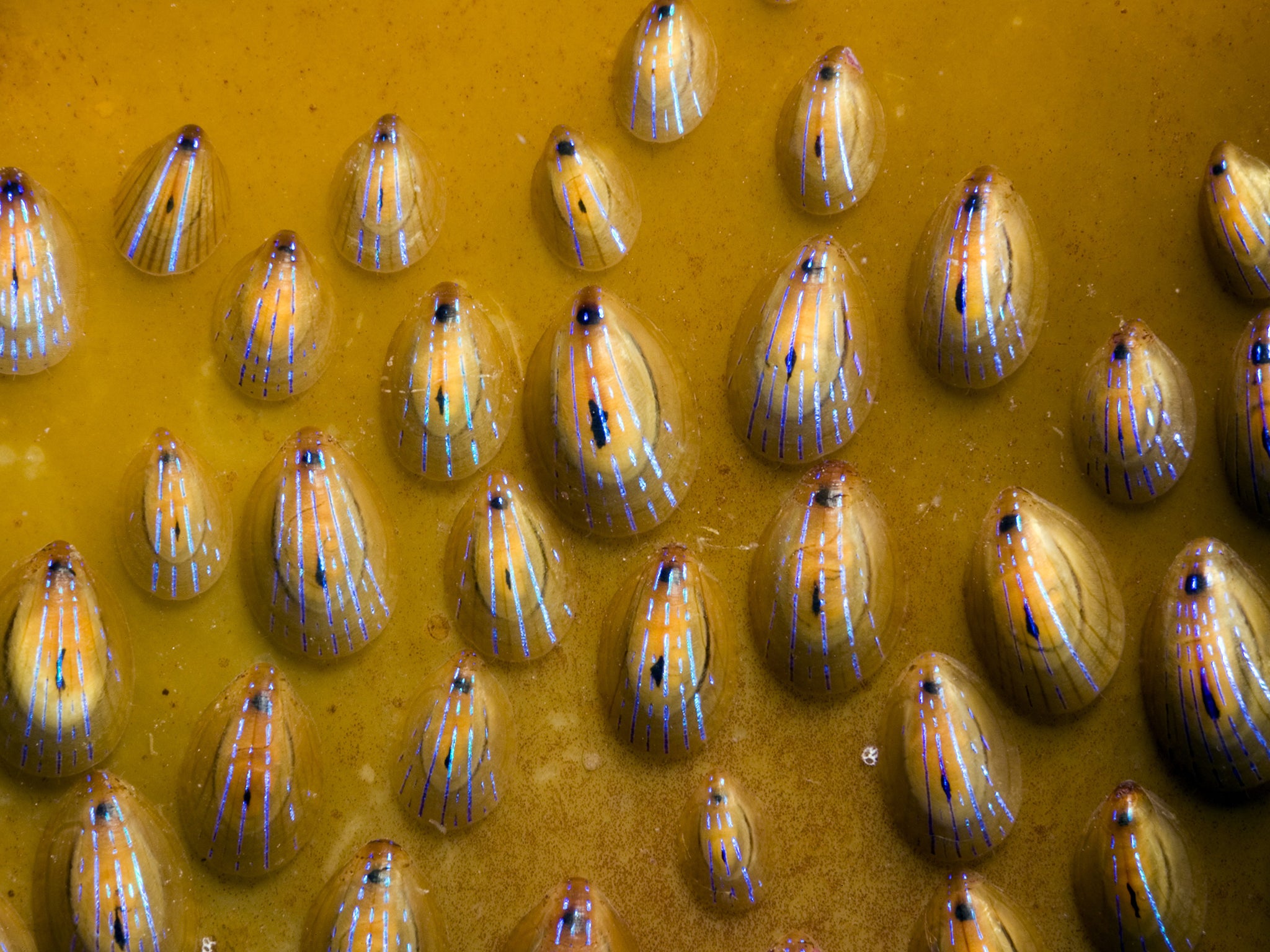Tiny mollusc on beach could hold key to augmented reality
Scientists say the natural optical structures found in the mollusc could be used as a basis for developing colour-selective, controllable, transparent displays

Your support helps us to tell the story
From reproductive rights to climate change to Big Tech, The Independent is on the ground when the story is developing. Whether it's investigating the financials of Elon Musk's pro-Trump PAC or producing our latest documentary, 'The A Word', which shines a light on the American women fighting for reproductive rights, we know how important it is to parse out the facts from the messaging.
At such a critical moment in US history, we need reporters on the ground. Your donation allows us to keep sending journalists to speak to both sides of the story.
The Independent is trusted by Americans across the entire political spectrum. And unlike many other quality news outlets, we choose not to lock Americans out of our reporting and analysis with paywalls. We believe quality journalism should be available to everyone, paid for by those who can afford it.
Your support makes all the difference.A tiny mollusc found on British shores may hold the secret to developing an “augmented version” of reality – a discovery that could potentially revolutionise the fledgling world of wearable apps such as Google Glass.
The blue-rayed limpet is a finger nail-sized mollusc that lives in kelp beds and is distinguished by the bright blue dotted lines that run in parallel along their translucent shells.
Scientists at MIT and Harvard University have now identified two optical structures within the limpet’s shell that give its blue-stripped appearance that can be quite brilliant when light hits at the right angle.
They say these natural optical structures could be used as a basis for developing colour-selective, controllable, transparent displays that require no internal light source and could be incorporated into glass and windows.
“Let’s imagine a window surface in a car where you obviously want to see the outside world as you’re driving, but where you also can overlay the real world with an augmented reality that could involve projecting a map and other useful information on the world that exists on the other side of the windshield,” said Mathias Kolle, assistant professor of mechanical engineering at MIT. “We believe that the limpet’s approach to displaying colour patterns in a translucent shell could serve as a starting point for developing such displays,” he added.
The findings, reported in the journal Nature Communications, represent the first evidence of an organism using “mineral structures” to produce optical displays. While birds, butterflies and beetles can also display brilliant blues, they do so with “organic structures” such as feathers, scales and plates.
The molluscs, which are also found on the coasts of Norway, Iceland, Portugal and the Canary Islands, first came to Dr Kolle’s attention when his brother, Stefan, of Harvard, brought him a few of the organisms in a small container.
The pair were struck by the molluscs’ brilliant patterning and decided to study their optical properties.
They assembled a team of researchers to do a detailed structural and optical analysis of the shells. They discovered that the zig-zag pattern on the blue-rayed limpet acts as a filter reflecting only blue light.
As the rest of the incoming light passes through the shell, the underlying particles absorb this light – an effect that makes a shell’s stripes appear even more brilliantly blue.
“It’s all about multifunctional materials in nature: Every organism – no matter if it has a shell, or skin, or feathers – interacts in various ways with the environment and the materials with which it interfaces to the outside world frequently have to fulfil multiple functions simultaneously,” said Dr Kolle.
“Engineers are more and more focusing on not only optimising just one single property in a material or device, light a brighter screen or higher pixel density, but rather on satisfying several design and performance criteria simultaneously,” he added.
Technology has a long history of borrowing from nature. The redesigned nose of the Shinkansen Bullet Train in Japan took inspiration from the kingfisher, a fish-eating fowl that creates barely a ripple when it darts into water in search of a meal.
The train’s 50ft-long “kingfisher” nose helped overcome the problem of noise pollution – previously as the high speed train drove through tunnels, air pressure had built up in waves and when the nose emerged, it produced a thunderclap heard for a quarter of a mile.
Meanwhile, the Namibian Beetle raises its back into the air as fog rolls into its desert habitat. Bumps on its shell catch water droplets, which then run down chutes toward its mouth.
The “Dew Bank Bottle” imitates the beetle’s water-collection system. Morning dew condenses on it and conveys it to the bottle, which has a drinking spout.
Join our commenting forum
Join thought-provoking conversations, follow other Independent readers and see their replies
Comments